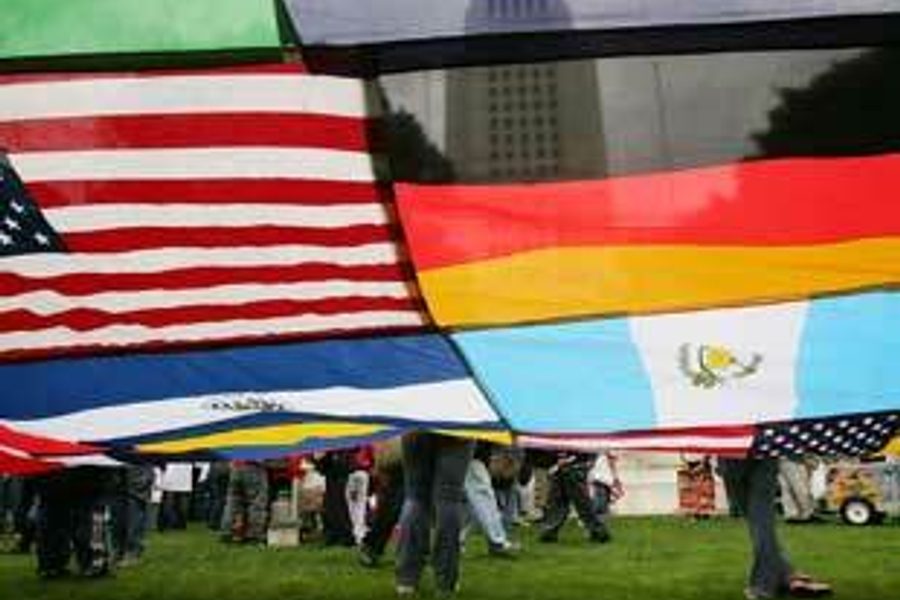
When the New York Times Magazine, for an end-of-the-millennium special issue, asked the oft-persecuted Indonesian novelist Pramoedya Ananta Toer to choose the best story of the last 1,000 years, he offered a somewhat ironic selection: the 1860 work of Dutchman Eduard Douwes Dekker, Max Havelaar, or the Coffee Auctions of the Dutch Trading Company. As Pramoedya explained, this now largely-forgotten book touches on two key “processes” of the past millennium: the intercultural mixing prompted by the West’s search for spices and the emancipatory educational opportunities provided to colonial subjects.
A long-time civil servant in the Dutch East Indies government, Douwes Dekker resigned when his charges of official corruption fell on deaf ears. He poured his frustration into Max Havelaar, whose title character is a Dutch colonial official who turns against the system of forcing Javanese farmers to grow cash crops to ensure steady profits for Dutch investors in what is now Indonesia. The book became the Uncle Tom’s Cabin of the Dutch East Indies – galvanizing liberals in the (global) North, and forcing the Dutch government to adopt a relatively more compassionate “ethical policy.” Dutch-educated Indonesians, many inspired by this former colonial official’s novel, launched a nationalist movement in the early 20th century that culminated in revolution in the ’40s and inspired counterparts across European empires.
Pramoedya is not alone in his esteem for Douwes Dekker’s novel. Benedict Anderson – renowned both as a Southeast Asianist and a political theorist – lauds it as well for its unprecedented anticolonial punch. Still, Anderson’s most recent book, Under Three Flags: Anarchism and the Anti-Colonial Imagination, complicates Pramoedya’s assertion that Max Havelaar and Indonesia “sparked” the decolonization process. Anderson foregrounds Filipino nationalism – at a time when the Philippines was under Spanish rule – situating this movement within the late-19th century global milieu of politically charged art and literature, anarchist stunts, and widespread anticolonial, anticapitalist strivings. While in his previous work Anderson has highlighted the distinctive national identity of, for instance, Java or Siam, here he muddies the picture, showing not just that nationalism is a construct adaptable to different circumstances but that even the most heralded local hero may march under several flags.
Under Three Flags tells several stories, brought into focus as they concatenate in Filipino nationalism. Anderson describes the book as “an experiment in … political astronomy. It attempts to map the gravitational force of anarchism between militant nationalisms on opposite sides of the planet.” As he traces the rise of anarchist ideas and actions across Western Europe starting in the late 19th century, he brings into the discussion sketches of revolutions and revolutionaries in Cuba, the Philippines, Haiti and Japan.
Anderson himself defies easy characterization. A political scientist and true polyglot with an abiding interest in culture, history and apparently most everything else, Anderson is best known for his 1983 Imagined Communities: Reflections on the Origin and Spread of Nationalism. This slim but trenchant volume posits nations as “imagined communities” fostered by the localization of religion and politics, the diminution of absolute monarchy and conceptions of divine right, and the interconnected growth of both capitalism and mass print media.
His writings have been featured in the New Left Review–including a 2004 triptych of articles that comprise much of Under Three Flags. Anderson distinguishes himself by marshalling unconventional evidence, innovatively compiled, and by making no apology for his own political sympathies. Even when he prances off on distant tangents (which, alas, does happen here), Anderson’s wit and charming inquisitiveness keep the reader with him. A word to the wise, or at least, to the curious: Don’t skip the footnotes.
The “First Filipino”
Under Three Flags’ central character is the “First Filipino,” novelist José Rizal (1861−96). Highly intelligent, well-educated, and widely traveled, Rizal occupied three worlds. The first was the Bismarck-dominated interstate system of the latter half of the 19th century, in which monarchism and the papacy were both in decline. The second was the milieu of the ascendant, but still savaged, global Left, epitomized in the Paris Commune of 1871, its harsh suppression, and the subsequent rise of anarchism as the prime vehicle to contest capitalism, imperialism and their ilk. The last was the crisis-riddled, corrupt, and dying Spanish empire.
Anderson superimposes on these sweeping trajectories a close examination of the galvanizing role of nationalist novels, particularly the brooding oddness of Rizal’s second such book, El Filibusterismo. He also explores a multinational cast of characters, including key figures in the Cuban, Puerto Rican and Filipino independence movements; and the organic, symbiotic intertwining of art, literature and politics. In doing this, Anderson revisits the role of not just the vernacular media central to Imagined Communities, but avant-garde publications of the metropole as well.
The book opens and closes, however, with Rizal’s likewise-remarkable contemporary, Isabelo de los Reyes, a Filipino journalist and folklorist. De los Reyes comes off a more earnest and practical character, with a greater penchant for action than Rizal. If Anderson’s story has a hero, it is less Rizal than the sincere, energetic, anarchist-inflected de los Reyes, in company with other worker-bees of the revolution. Bookending the narrative with such a concrete and, well, likeable character helps ground this sometimes abstract and abstruse account and makes real the connection between the global flow of ideas, people, resources and local activist experience.
Anderson’s analytical focus and investigative bent are in sharpest relief in his textual analysis of Rizal’s novels: tracing the origins of a single compelling phrase, “el demonio del las comparaciones,” reveals a nest of questions about Rizal’s reading habits, linguistic aptitude, friends, sympathies and use of allusions. Here Anderson, abetted by his historian brother Perry, is more archaeologist than astronomer, to terrific effect. As in his other works, Anderson prefers to provide his own translations – and except where specifically noted, he offers both the original and the translation of all quoted passages, however lengthy. Moreover, he critiques extant translations, uncovering their biases and inaccuracies, as a useful (if sometimes catty) exercise in intellectual history. He aptly uses archived manuscripts (most notably, of Rizal’s El Filibusterismo), masses of personal and official correspondence, and carefully selected secondary sources, and holds it all together with a lifetime’s accumulated grasp of the subjects at hand. Given the significance of facility in language to the sort of cross-border fertilization Anderson describes, his scope and methods both reinforce his scholarly authority and highlight his affinity with the clever cosmopolitans he is describing.
At home and away
Anderson calls this period “the Age of Early Globalization.” However, one might contest just how “early” the globalization Anderson examines is. Pramoedya, for instance, frames his discussion of the anticolonial ripples launched by Douwes Dekker and Indonesia in an overview of a much earlier phase, one of religious missions and the quest for spices. The mercantilist political economic order that vindicated colonial expansion itself represents the cross-border spread of transformative ideas, not just of coercion and exploitation. The intellectual processes and transcontinental political trends Anderson depicts thus do not represent the early phase of globalization, though they are part of that long sequence.
What Anderson’s narrative does embody, though, is the multilayered context implied by the book’s title. Anderson complicates his own notion of the “imagined community.” Early nationalists may have felt as much affinity to their co-ideologists abroad as to their erstwhile co-nationalists at “home” – and indeed, many were the sort of itinerant, cosmopolitan, linguistically agile global citizens so often presumed unique to our current stage of globalization. These were men and women of multiple loyalties – followers of several flags. But nowhere in the book does Anderson specifically address the notion of the flag as nationalist symbol. We are left to deduce for ourselves that the flags on the book’s cover are those of the Filipino revolutionary organization Katipunan (in one of its many iterations), anarchism (the Black Flag), and independent Cuba. (It is intriguing that despite the book’s title and cover art, not one of the many illustrations within features a flag.)
In fact, none of the activists in Anderson’s account was likely to be following these three flags in tandem, but all did or could negotiate multiple overlapping loyalties – to transnational intellectual currents, to local ethnic or family groups, to newly-imagined nations, to real friends and apparent compatriots in the metropole, to subjects of colonial power elsewhere.
Unfortunately, we run up against a pesky problem of causality in sorting out the significance of these various potential allies and influences. Rizal, for instance, was an unwilling icon of the Katipunan and assiduously distanced himself from its insurrectionary shenanigans. He moved in radical Left circles but seemed to care little for political theory. He was willing to offer Spain his medical services during Martí’s revolution in Cuba and was dubious of the latter’s revolutionary potential. Meanwhile, Andrés Bonifacio and Emilio Aguinaldo – respectively, the Katipunan’s founder and the man who upstaged him to declare Filipino independence – were relatively provincial local boys, who followed events in Cuba largely in terms of what they meant for Spain’s ability to cope with revolutions on two fronts simultaneously. They may have operated amidst a global context of anarchism, but were apparently not subscribers themselves.
In other words, we see the global spread of ideas, yet observe the relative isolation of so many of the localized (however globally inspirational) actions that could be informed by those ideas. This disconnect is neither original nor damning – “think globally, act locally” and “all politics is local” have achieved the status of inanity because they are so obviously true. Still, it does suggest that Anderson could go further to convince us of anarchism’s “gravitational force” as an ideology, rather than as an emblem of the escalating levels of swashbuckling political violence and boldness.
A grand dollhouse
At times, reading this book gives one the sensation of looking into an elaborate, timeless, placeless dollhouse – a feeling only compounded by the sprinkling through the text of photographs, maps, and other artwork, some more clearly germane than others. We peer into a room, exult in the gorgeous details, nod toward the stylized inhabitants, then move on to the next room. We note doorways and corridors connecting the rooms, but suspect most are little-used. We sense that somewhere to the right of this rarefied world is an ogre.
The impression is of a dangerous and vulnerable world, but a rather glamorous one. At the end of our tour, we are left to our own devices to imagine the community that might people such an edifice: Of the books in the library, which would they read? Does the motley crowd in the servants’ quarters find common cause? The unimaginative reader might crave more of a back-story.
But one surmises that Anderson is not writing for the unimaginative reader. Those who will most enjoy this book are readers who enjoy a bit of hands-on excavation, not pat summation. Here we have a chance to follow tangents, investigate coincidences and reconstruct a grand dollhouse of the mid-to-late-19th century world, posing artists and journalists, demagogues and bystanders, kings and captains-general, revolutionaries and reactionaries all within the same broad schema. We understand the temporal and ideological interconnections of that world from Anderson’s account, even if some of the precise ties remain hazy.
Most of all, Anderson’s latest book is about possibilities. Today, we have currents and we have comrades. We have novels. We have media far more extensive, varied, and widely-disseminated than the amazing propaganda rags, literary magazines and vernacular newspapers of anarchism’s heydays. We have quick, easy transoceanic transportation. We have long known that nationalism is not exclusive of a transnational left (or right), that citizenship is institutionally and symbolically important but culturally mutable, that our affinities and inspirations as political actors are – and should be – multifarious. In short: Why wave just one flag?
Through this compelling, if necessarily inconclusive study, Anderson helps us interrogate “globalization.” He pushes us to move beyond the knee-jerk assumptions of cultural imperialism and crass corporate exploitation that so color contemporary discussions of the topic, and instead see the potential of a world in which, more than ever before, we are mobile, we are informed, and we have the capability of applying shared ideas to distinctive causes through cross-border, collaborative engagement.





